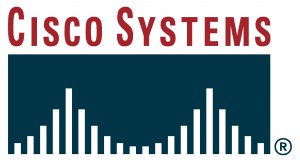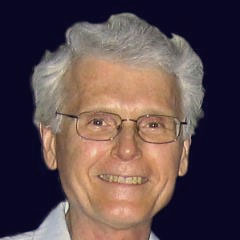The following account of the real origins of Cisco Systems, as opposed to the history often recounted in Cisco company literature, was written in 1999 by Tom Rindfleisch. Rindfleisch was Director of the SUMEX-AIM project (1973-1990), under which the software for a powerful Internet router system was developed and widely deployed at Stanford and elsewhere for research purposes. That code found its way, without approval from the original developers, to form the basis of the Cisco router.
Tom Rindfleisch
Last updated April 8, 1999

Computing, networking, and world-wide-web technologies have become commodities in recent years, and are affecting almost all aspects of our lives. Twenty to thirty years have passed since the invention of many of the underlying concepts and technologies leading up to this information revolution. We are beginning to try to gain some historical perspective on the people and the settings giving rise to these technologies, along with the extraordinarily successful industries that are pacing the marketplace for derived commercial products. For example, Stanford University Libraries and the Institute for the Future hosted a recent scholarly retrospective on the work of Douglas Engelbart, entitled Engelbart’s Unfinished Revolution . In 1968, Engelbart’s group at SRI demonstrated the computer mouse, graphical user interfaces, hyperlinked documents, video conferencing, and computer-assisted collaborative environments – ideas that so far outstripped what could be delivered practically that decades were required to create a marketplace.
Another recent documentary, Nerds 2.0.1: A Brief History of the Internet, by Bob Cringely, was shown on PBS in November 1998. This work attempts to trace the invention of several other key aspects of modern information technologies – the Internet, local area networks, and the world-wide-web phenomenon. Despite its chatty, informal format, Nerds 2.0.1 does quite a nice job of describing the invention and development of the early ARPANET (late 1960s), the Ethernet (mid-1970s), and the early Internet (1980s). However, Cringely gets quite careless in his treatment of later developments in this story – for example, those leading to commercial Internet router technologies (1980s), which make possible the incredible network of networks comprising the modern Internet and which fueled the meteoric success of Cisco Systems. Cringely’s error, which he admits after the public broadcast of his program, was that he focused only on the people who became rich and famous through Cisco, principally Len Bosack and Sandy Lerner. In the process, aided by a lack of candor by Bosack and Lerner about their own true roles, Cringely overlooks the seminal role of the real inventor, Bill Yeager (aided subsequently by Kirk Lougheed and others). It turns out this kind of reporting is not so rare in Silicon Valley, where companies like to hype the skills and prowess of their founders.
Because the origin of Internet routers and Cisco Systems is a uniquely Stanford story, this letter is to set the record straight for the Stanford community (and archives) about what really happened. Computer networking at Stanford has a long and productive history. The Stanford AI Laboratory was among the first of the 64 nodes on the ARPANET in the late 1960s. The SUMEX-AIM project in the Stanford Medical School, where Yeager was employed, was added in 1974 – the first non-DoD node on the ARPANET. SUMEX was funded by the NIH to create a national community to collaborate in studying artificial intelligence applications in biomedicine and operated from 1973-1992.
Through the 1970s, it became clear that computers were destined to become more powerful, smaller, and cheaper, and that communications among machines would be a core part of computing architectures. Many experiments were done in the mid-to-late 1970s to interconnect machines (principally PDP11s and time-shared PDP10s at the time). These took place at Stanford in the AI Lab, the Institute for Mathematical Studies in the Social Sciences (IMSSS), and at SUMEX. Neither Len Bosack nor Sandy Lerner were on the Stanford scene at the time.
These efforts changed fundamentally in early 1980, when Xerox Corporation granted Stanford (along with MIT and Carnegie Mellon University) access to their Ethernet technology. The Ethernet design (by Metcalfe and Boggs) was a much more general solution and was adopted eagerly. This immediately led to the need for what became known as “router technology”. Routers were to interconnect not only different Ethernet segments (to realize the research group goal – not Bosack’s – of interlinking all Stanford machines), but also to interconnect Ethernet local area networks and the national Internet (Internet protocols were rolled out in 1982 to replace the ARPANET). The SUMEX project initiated an effort to build a network router and TIP (Terminal Interface Processor) in late 1980 and Bill Yeager was assigned to work on it. He first produced a stable PDP11-based router by late 1981 and then a Motorola 68000-based router and TIP by late 1982 – the latter used experimental circuit boards, developed by Andy Bechtolsheim in the Computer Science Department, that would later become the basis for SUN Microsystems. Yeager’s work involved the development of a unique, stand-alone operating system and service programs for the router that could efficiently handle routing of packets for diverse protocols among a number of networks connected to the router. All of this work was done by Yeager himself in the SUMEX laboratory and involved no contact with Bosack or Lerner.
Because our work was government-funded and we were part of the Internet culture, we disseminated these router systems widely at Stanford and at several other universities for non-commercial, academic purposes. The overall networking of the Stanford campus, based on the experimental networks developed by SUMEX and the AI Lab, was authorized and funded by the Stanford Board of Trustees about 1985. The project to accomplish that goal was run by Mr. Bill Yundt, who managed the Network Communications group in the central campus IT organization. Again, neither Bosack nor Lerner played any role in that effort.
Thus, by time Bosack had access to the router source code in 1985, multiple-protocol routers were a relatively mature technology. For the “nerds” among us, that code routed PUP, XNS, IP, and CHAOSnet protocols. The software was licensed by Bosack and Lerner on behalf of Cisco Systems in 1986, through the Stanford Office of Technology Licensing. Yeager is named in the agreement document as the principle developer/inventor, and received 85% of the royalty distribution (which he contributed to the SUMEX project to support further research). Bosack’s and Lerner’s contributions lay in the important (and risky) realization that this technology could be made into a commercial venture – and credit for that should not be denied. Still, Yeager never benefited from that venture (nor was he given an opportunity to by the organizers of Cisco Systems). Nor has he received public recognition for his major contribution to Cisco’s founding and success.
As we said earlier, the kind of shaded history presented in Nerds 2.0.1, developed primarily by company marketers, is not rare. Cringely was also simplistic in assigning credit for the development of first graphical world-wide-web browser to Marc Andreessen, who was a key player in founding Netscape Communications. Cringely corrects this error as well in his December 10th PBS Pulpit article referenced above, to more properly recognize the earlier work of Tim Berners-Lee himself (inventor of the world-wide-web concept) and others on graphical browsers.
As all nerds know, the title, “Nerds 2.0.1 …”, signifies a minor version release and these always have bugs. As John Carman said in his San Francisco Chronicle review of November 25th, “One day there will be a TV sitcom about the nouveau riche of the computer revolution.” The saga of Cisco Systems would certainly be a rich source of material for that series! However, there is also a serious side to this.
As the people who played key roles in developing these technologies age and move on to other tasks, we have an obligation to set down the raw material of these histories of innovation accurately. Of course it is appropriate to do justice to the real players who sweated over giving birth to innovative ideas, even if they did not become rich and famous as a result (e.g., Engelbart, Berners-Lee, and Yeager). Creating truly innovative software is a joyous experience and that drives others to push further in producing new technologies.
Equally important, it is often university laboratories, such as Stanford’s, that make innovators’ work possible. It is important to capture something of the dynamics of technology invention and its delivery as practical products in a rich university/industry environment like Silicon Valley. These dynamics help to define the relative roles of universities and industry, and the ways in which these roles may be changing (or not) under the commoditization of computing technologies. The final report [PDF] (February 1999) by the President’s Information Technology Advisory Committee emphasizes the need to continue aggressive funding for university and industry research in these areas:
Vigorous information-technology research and development (R&D) is essential for achieving America’s 21st-century aspirations. The technical advances that led to today’s information tools, such as electronic computers and the Internet, began with Federal government support of research in partnership with industry and universities. All of these innovations depended on patient investment in fundamental and applied research…
The work of the individuals who gave life to Stanford’s research laboratories in conceiving and evolving important networking technologies (which we take for granted today) serves as an example of how this partnership can function at its best.
Tom Rindfleisch
Director, Lane Medical Library
(Formerly Director, SUMEX-AIM Project)
Stanford University School of Medicine and Department of Computer Science
A published summary of this account appeared subsequently in:
Waters, JK, John Chambers and the CISCO way: navigating through volatility, p 29, John Wiley and Sons (2002).

